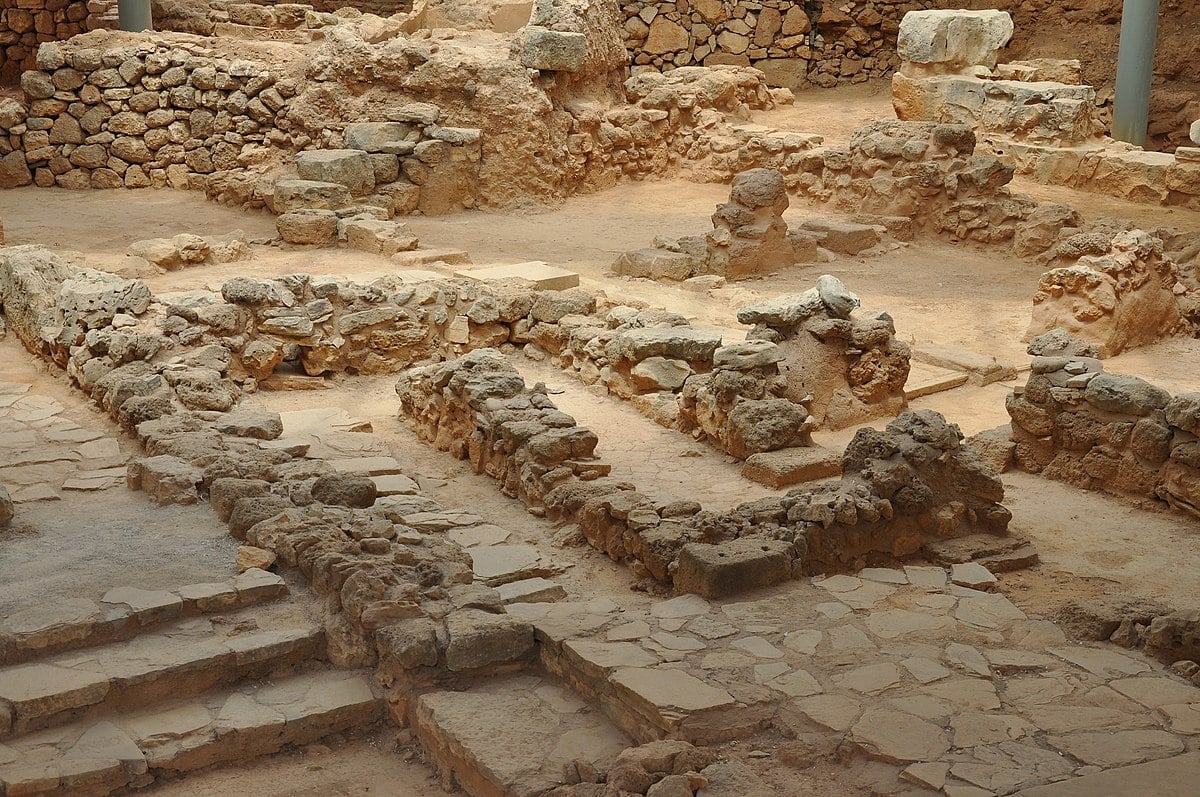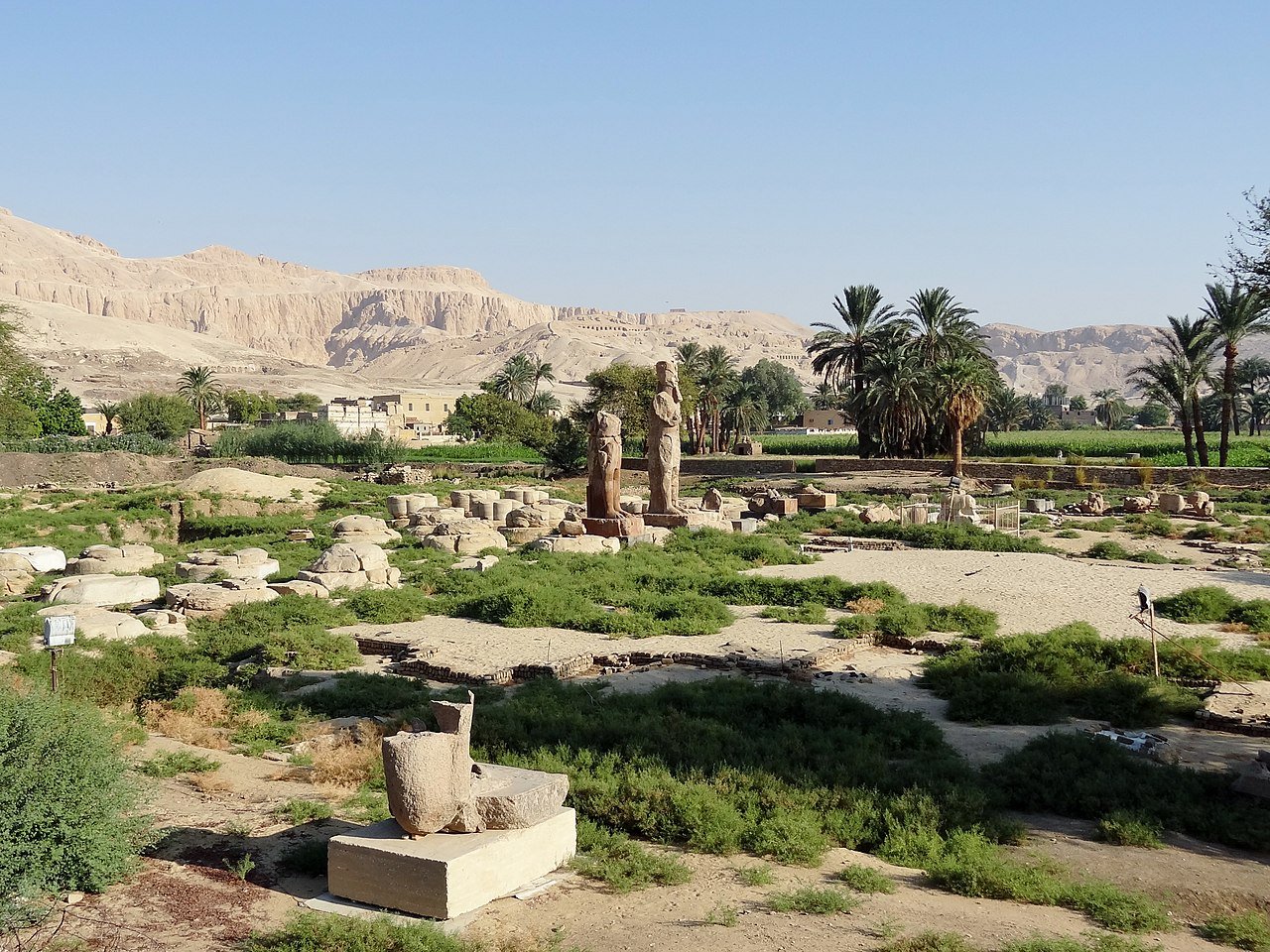
The Philistines were one of the most prominent nations inhabiting ancient Palestine. According to the Bible, they were constant enemies of the Israelites. However, there is an issue that has caused a lot of debate. The prevailing view today is that the Philistines arrived in Palestine in the Late Bronze Age. Yet, the Bible places them in Palestine centuries before that. According to the best available evidence, when did the Philistines really arrive in Palestine?
When the Philistines arrived according to the Bible
In the Bible, the Philistines appear in the very first book, Genesis. The account portrays them as living in Canaan (that is, Palestine) in the time of Abraham. They had interactions with both Abraham and his son Isaac. In these stories, the Philistines had a king named Abimelech and an army.
According to the Bible’s chronology, Abraham lived in the 20th century BCE. Therefore, this would mean that the Philistines had already arrived in Canaan as early as that century. Supporting this conclusion, the Bible mentions the Philistines in the accounts of Moses, Joshua, and the Judges, covering a period between c. 1500 and c. 1100 BCE.
In a number of places, the Bible tells us that the Philistines came from Crete. This is supported by archaeological and genetic research. However, the issue of when the Philistines arrived in Canaan from Crete is far more problematic.
When did the Philistines arrive in Canaan according to archaeology?
One very popular view over the past century has been that the Philistines arrived in the Late Bronze Age. This is based on identifying them with the Sea Peoples, or a subgroup thereof. The Sea Peoples invaded the Levant, including Syria and Egypt. Egyptian monuments mention these invaders in the time of Ramesses II through to the time of his second successor, Ramesses III.
In the time of that latter king, who ruled in the mid-12th century BCE, one group among the Sea Peoples were called the Peleset. Scholars widely accept that the Peleset are identical to the Philistines. The two names are a linguistic match, and the Peleset appear to have come from the Aegean, matching the Bible’s claim concerning the origin of the Philistines.
One Egyptian monument that mentions the Peleset explains that the Egyptians defeated them in battle and then forcefully relocated them in southern Canaan. This is where the Bible places the Philistines. Furthermore, pottery that is firmly identified with the Philistines in later history originates in this period. Additionally, genetic research reveals that there was an influx of European DNA in Philistia in this same era.
All of this evidence appears to make it clear that the Philistines arrived in southern Canaan and established their land of Philistia in the mid-12th century BCE, after being defeated in battle by the Egyptians.
A possible explanation
The difference between these two viewpoints has caused a lot of debate. The most common explanation is that the Philistines of the first part of Bible history were different from the Philistines of later Bible history. This theory argues that the Philistines from Crete did arrive in Palestine in the 12th century BCE. However, the ‘Philistines’ from before then were just a Semitic group living in what later became Philistia.
The issue with this explanation is that it does not solve the problem. In the Bible book of Deuteronomy, set in the time of Moses in the 15th century BCE, we find the statement:
“As for the Avvim, they had dwelled in settlements as far as Gaza until the Caphtorim, who came out from Caphtor, annihilated them and settled in their place.”
Gaza was one of the main Philistine settlements, and Caphtor was the Hebrew name for Crete. Therefore, this unambiguously places the arrival of Cretans in Philistine territory in Moses’ time, centuries before the Sea Peoples. With good reason, these ‘Caphtorim’ – inhabitants of Caphtor, or Crete – have been identified as Philistines. But even if they are a separate group, the fact remains that the Bible places Cretans in Philistine territory much earlier than the arrival of the Sea Peoples.

Evidence shows the Philistines arrived in Palestine before the Sea Peoples
Contrary to the popular viewpoint, there is evidence that the Philistines had already arrived in ancient Palestine before the invasion of the Sea Peoples. One piece of evidence comes from Kom el-Hetan, the Mortuary Temple of Amenhotep III. Here, we find inscriptions referring to various places in the Aegean, including major sites on Crete.
Interestingly, this monument lists these sites as the ‘lands of the Fenkhu’. In plenty of other Egyptian texts, the term ‘Fenkhu’ is used in reference to Palestine. Many scholars believe that it was actually the origin of the term ‘Phoenicians’, which is what the Greeks called the Canaanites.
It is very significant that the Egyptians used the term ‘Fenkhu’ to refer both to peoples of the Aegean and also to the inhabitants of Canaan, or Palestine. This strongly supports the conclusion that Aegean settlers (such as Philistines) had already arrived in Palestine by the time of Amenhotep III, in the 14th century BCE.
The Greeks later referred to all of Philistia, Israel and Judah as ‘Palestine’ because the Philistines were the closest of the three groups. Something similar may have happened in Egyptian records. They may have used ‘Fenkhu’, which originally meant Aegean peoples, to refer to the inhabitants of Canaan in general because those Aegean settlers were the closest to them.
The Philistines arrived in Palestine twice
How can we harmonize this evident fact from the Egyptian records with the archaeology? Is there not a lack of archaeological evidence for Philistines in Palestine before the 12th century BCE?
The reality is simply that there were two groups of Philistines. One arrived in the 12th century BCE with the Sea Peoples. Their material culture (such as pottery styles) continued through to later Philistine history. However, that does not mean that there were not already Philistines living there, using pottery styles which were replaced by those of the new arrivals.
The Bible itself hints at the fact that the Philistines arrived in Palestine in two separate groups. It refers to a nation called the Cherethites, which it always closely associates with the Philistines. In fact, the Bible uses that term in parallel with ‘Philistines’. This indicates that the Cherethites were a prominent tribe among the Philistines.
Scholars usually explain the use of these two different names by arguing that the Cherethites were a second group of Philistines who arrived later. Notably, the Cherethites are first mentioned in the time of David. That was the 11th century BCE, not long after the Egyptians settled the Peleset in southern Palestine.
Minoan colonies
Throughout most of the Bronze Age, the principle inhabitants of Crete were the Minoans. It was only in the 15th century BCE that they were overthrown by the Mycenaean Greeks. This means that the Cretans who arrived in Palestine and appear in the Bible as the Philistines in the time of Abraham, Moses, Joshua, and the Judges would logically have been Minoans.
So, is there evidence for Minoan presence in Palestine as early as the 20th century BCE? Indeed there is. This was the era known as the Middle Minoan period. Scholars assign this period to the era between 2100 and 1700 BCE. This period was marked by increased trade outside of Minoan territory.
The presence of a type of Minoan pottery called Kamares Ware in the Levant is actually well known. It appears in several locations along the Syro-Palestinian coast in the Bronze Age. Some pottery dating to c. 1800 BCE was found at Ashkelon in particular. This was one of the major cities of the Philistines.
There are plenty of examples throughout history of nations establishing colonies to aid in establishing trade links. One example is Massalia (Marseille), which the Greeks established in c. 600 BCE to help them trade with the Gauls.
The evidence is clear that the Minoans began trading extensively with the Levant from about 2100 BCE. Thus there would be nothing surprising at all about the idea that the Minoans established a few trading colonies during this period. Supporting this, Professor Keith Branigan noted the similarities in urban structure between Minoan Crete and Bronze Age Palestine.
See all the latest news from Greece and the world at Greekreporter.com. Contact our newsroom to report an update or send your story, photos and videos. Follow GR on Google News and subscribe here to our daily email!



